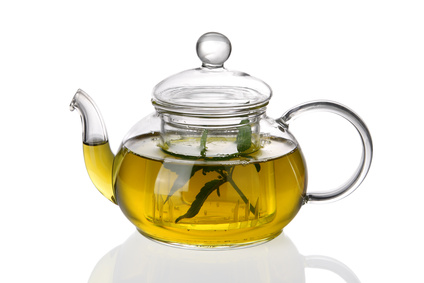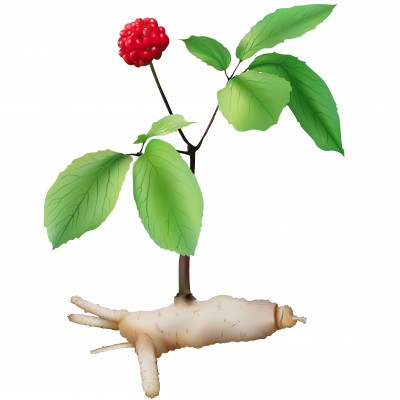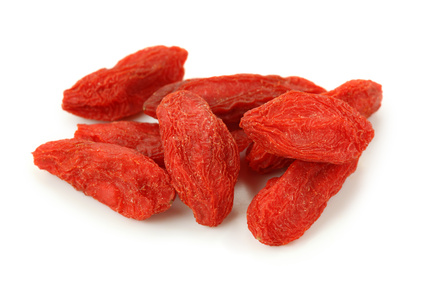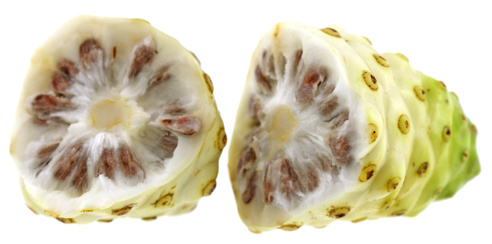What is a Superfood List? “Superfoods” provide antioxidants in addition to essential vitamins and minerals that protect the body and prevent aging. A superfood is a nutrient-rich food that has high amounts of phytochemicals. Phytochemicals can reduce the risk of some types of cancer, reduce inflammation, strengthen the immune system, or in some other way contribute to a person being healthier. Brightly colored superfoods provide antioxidants. Super foods are nutrient-dense and low in calories.
Omega-3
 Omega-3’s are long-chain polyunsaturated essential fatty acids that are vital to human health. Essential fatty acids are polyunsaturated fatty acids that the human body needs for metabolic functioning but cannot produce, and therefore has to be acquired from food. Its primary components are DHA and EPA. EPA (eicosapentaenoic acid) is believed to play a role in the prevention of cardiovascular disease, while DHA (docosahexanoic acid) is the necessary for proper brain and nerve development. EPA supports the heart, immune system, and inflammatory response. Fats account for over 50% of the brain and DHA represents 30% of brain matter. The highest concentration of Omega-3 DHA in the human body is in the retina. DHA and EPA are essential in healthy brain development; however, studies in Western countries indicate most adults and over 70% of children may be deficient in these oils. Omega 3 fatty acids may be found in several kinds of cold water fish including salmon, trout, mackerel, sardines, tuna, and many others. Vegetable sources include flax seeds, pumpkin seeds and walnuts.
Omega-3’s are long-chain polyunsaturated essential fatty acids that are vital to human health. Essential fatty acids are polyunsaturated fatty acids that the human body needs for metabolic functioning but cannot produce, and therefore has to be acquired from food. Its primary components are DHA and EPA. EPA (eicosapentaenoic acid) is believed to play a role in the prevention of cardiovascular disease, while DHA (docosahexanoic acid) is the necessary for proper brain and nerve development. EPA supports the heart, immune system, and inflammatory response. Fats account for over 50% of the brain and DHA represents 30% of brain matter. The highest concentration of Omega-3 DHA in the human body is in the retina. DHA and EPA are essential in healthy brain development; however, studies in Western countries indicate most adults and over 70% of children may be deficient in these oils. Omega 3 fatty acids may be found in several kinds of cold water fish including salmon, trout, mackerel, sardines, tuna, and many others. Vegetable sources include flax seeds, pumpkin seeds and walnuts.
The benefits of omega-3 fatty acids include reducing the risk of heart disease and stroke while helping to reduce symptoms of depression, attention deficit hyperactivity disorder, joint pain and other rheumatoid problems. Clinical trials suggest that omega 3 fatty acids may be effective to people suffering from conditions like rheumatoid arthritis, ulcerative colitis, cystitis and other painful disorders. With over 8,000 clinical trials, Omega-3 is one of the most researched substances in modern medicine. Recent studies are identifying potential effects for a wide range of conditions including cancer, inflammatory bowel disease, and other autoimmune diseases such as rheumatoid arthritis and lupus.
It’s essential that pregnant women take in enough Omega-3 and that children in early infancy take in Omega-3. In the last three months of pregnancy, the need for omega 3 fatty acids is increased significantly, as this is the stage for brain development in the baby and DHA fatty acids are required. Omega-3 are even more vital during the third trimester, an important time period for fetal brain development.
Omega 3 are very important for the proper functioning of the brain including cognitive and behavioral functioning. Research suggests that omega3 fatty acids is related to a number of biological processes that have been found to be associated with depression. According to a research published in the 2011 issue of European Archives of Psychiatry and Clinical Neuroscience, there was a significant difference in self-reported symptoms of depression by participants who took omega-3 versus those who were given a placebo over a period of 6 months.
Omega-3 are essential for normal brain function. Docosahexanoic acid (DHA) which reduces oxidative stress and enhances synaptic plasticity and learning and memory is the most abundant omega-3 in cell membranes in the brain. Omega 3 fatty acids concentrations influence the production of neurotrophic factors,which regulate the growth of new brain cells.
Particularly EPA/DHA, do appear to reduce the risk of dying from cardiovascular disease. EPA and DHA help protect against excess platelet aggregation. Data from the MRFIT study have indicated that increasing intakes of EPA+DHA up to 700 mg/day are associated with overall reductions in all-cause as well as coronary disease-related mortality. Omega-3 fatty acids inhibit the production of thromboxane A2 and inflammatory cytokines. Both of these changes tend to reduce the tendency of blood to clot, which should the risk of a fatal heart attack.
Omega-3 fatty acids play an important role in the production of powerful hormone-like substances named prostaglandins. Prostaglandins help regulate many important physiological functions including blood clotting, blood pressure, nerve transmission, the inflammatory and allergic responses and the production of other hormones. Omega-3 fat acids, decreases inflammation in inflamed joints, meaning less pain and reduced dependancy on pain-killers and nonsteroidal anti-inflammatory drugs.
DHA, has been shown to reduce the size of tumours and enhance the positive effects of the chemotherapy drug cisplatin, while limiting its harmful side effects. A study in the European Journal of Cancer Prevention suggests a decreased risk in breast and colorectal cancer with increased DHA and EPA intake. Preliminary studies suggest that taking omega-3 daily may help slow the progression of colon cancer in people with early stages of the disease. Researchers at Vanderbilt University Medical Center have found that eating omega-3 fatty acids regularly can result in prevention of colon polyp formation.
Green Tea
Green tea, is the unfermented product of the Camellia sinensis plant. Oolong tea is partially fermented, and black tea is  fully fermented. Green tea is not fermented at all. Fermentation may reduce the levels of some compounds, such as antioxidants, in the tea.
fully fermented. Green tea is not fermented at all. Fermentation may reduce the levels of some compounds, such as antioxidants, in the tea.
Green tea is the best food source of a group called catechins. The principal catechins found in green tea are epicatechin (EC), epigallocatechin (EGC), epicatechin gallate (ECG), and epigallocatechin gallate (EGCG). One cup of green tea supplies 25-30 mg of EGCG.
EGCG, besides inhibiting the growth of cancer cells, it kills cancer cells without harming healthy tissue. Test tube studies have suggested that compounds in the green tea may help stop new blood vessels from forming, thereby cutting off the supply of blood to cancer cells. These anti cancer actions have been assumed to be due to the powerful antioxidant effects of green tea’s catechins, EGCG (epigallocatechin-3-gallate).
Epigallocatechin Gallate destroys free radicals and prevents free radical damage of cells and DNA which has been linked to cancer and several chronic disease conditions. A randomized, controlled study published in the “Journal of Nutrition” showed that drinking 32 ounces of green tea per day led to an increase of catechins in the blood and a decrease in oxidative DNA damage among smokers. Oxidative DNA damage is implicated in the development of various forms of cancer.
in 1994 the “Journal of the National Cancer Institute” published the results of an epidemiological study indicating that drinking green tea reduced the risk of esophageal cancer in Chinese women and men by 60 percent. In Japan, a study of 500 women with Stage I and Stage II breast cancer found that increasing their green tea consumption before and after surgery significantly lowered the risk of recurrence. In test tube studies, green tea has been shown to fight pancreatic cancer by damaging the mitochondria of the cancer cells and inhibiting cancer activation. Studies in laboratory animals have found that green tea polyphenols inhibit the growth of esophageal cancer cells.
Dr I-Hsin Lin, of Shan Medical University, found that among smokers and non-smokers, people who did not drink green tea were more than 5 times as likely to get lung cancer than those who drank at least 1 cup of green tea a day. In one study, women who drank two or more cups of green tea each day had a 46% lower risk of getting ovarian cancer than women who didn’t drink green tea. A study published in the 2004 issue of the “International Journal of Cancer” found that EGCG significantly inhibited, in a dose-dependent manner, the production of prostate-specific antigen, a marker for prostate cancer risk.
According to the researchers injected mice with an antioxidant from green tea named EGCG and it decreased production of beta-amyloid, a protein that forms the plaques that clog the brains of Alzheimer’s disease. In a the study, published in the September 2010 Journal of Clinical Neuroscience, laboratory mice with Parkinson’s disease were given the epigallocatechin-3-gallate, and nerve cell death was reduced by 50 %.
The catechins inhibits several viruses, including viral hepatitis. Scientists at the University of California at Los Angeles have discovered that, naringenin and catechin, display powerful antiviral activity on tissue culture infected with hepatitis C. A 2008 study published in “Antiviral Research” found that epigallocatechin-3-gallate) inhibited hepatitis viruses by up to 50 percent. In lab tests, epigallocatechin-3-gallate , found in green tea, was found to prevent HIV from attacking T-Cells. Researcher Professor Mike Williamson, made the following statement; this research shows that green tea , could slow down the spread of HIV and could reduce the risk of becoming infected by HIV. 2011 research by the Linus Pauling Institute found that epigallocatechin-3-gallate in green tea has a powerful ability to increase regulatory T cells in the body and develop the immune system and suppress autoimmune disorders.
Green tea is associated with a reduction in many risk factors for cardiovascular disease. When compared to drinking less than one cup per day, daily consumption of five or more cups of green tea was associated with a 16% reduction in mortality from all causes and a 26% reduction in mortality from cardiovascular diseases. Green tea was particularly associated with a reduction in the risk of stroke. Isolated flavonoids found in green tea have been consistently shown to inhibit the development of atherosclerosis in animal models. In a study performed by Dr. Nicholas Alexopoulos; found that the consumption of green tea rapidly improves the function of cells lining the circulatory system.
Ginseng
 Panax Ginseng (Asian ginseng) is a perennial plant grown in Korea, China, Japan, and Russia. Other types of ginseng include American ginseng and Siberian ginseng. Siberian ginseng or eleuthero is not a true ginseng. (Siberian ginseng is regarded as the “poor man’s ginseng”). Panax ginseng was first discovered in China over 5000 years ago in the mountains of Manchuria. In 1976, four hundred -year-old root of Manchurian ginseng from the mountains of China reportedly sold for $10000 per ounce.
Panax Ginseng (Asian ginseng) is a perennial plant grown in Korea, China, Japan, and Russia. Other types of ginseng include American ginseng and Siberian ginseng. Siberian ginseng or eleuthero is not a true ginseng. (Siberian ginseng is regarded as the “poor man’s ginseng”). Panax ginseng was first discovered in China over 5000 years ago in the mountains of Manchuria. In 1976, four hundred -year-old root of Manchurian ginseng from the mountains of China reportedly sold for $10000 per ounce.
Panax ginseng is used for improving, concentration, memory, physical stamina and athletic endurance. The root of panax ginseng contains active chemical components called ginsenosides that are thought to be responsible for the herb’s medicinal effects.
Ginseng is known to be an adaptogen. Adaptogens, that has the ability to bring the body back into a healthy, balanced state. Russian researchers report that ginseng normalizes the level of arterial pressure and is effective in the treatment of both hypotension and hypertension. Asian ginseng may improve cognitive performance during prolonged periods of mental activity, according to a 2005 study from the “Journal of Psychopharmacology”.
In lab research using cell cultures and animals, ginsenosides have been shown to boost the immune system or slow the growth of cancer cells. Some clinical studies report that panax ginseng can improve the function of the immune system. In one study, 227 patient received either ginseng or placebo for 12 weeks, with a flu vaccine given after 4 weeks. The number of colds and flu were 2/3 lower in the group that took ginseng. Animal-based studies indicate that taking panax ginseng causes a significant increase in antibody production and increases the survival rate of mice exposed to viruses.
According to studies performed have found that people taking ginseng were 70% less likely to develop cancer compare to others and the more ginseng they consumed, the lower the risk of developing cancer was. Data from an epidemiological study show that ginseng improves survival and quality of life in breast cancer patients. The antitumor effects of ginseng were enhanced when combined with antioxidants.
There is evidence that ginsenosides can facilitate penile erection by directly inducing vasodilation and relaxation of the corpus cavernosum. Men experiencing sexual difficulties due to inability to achieve erection may be helped by panax ginseng, according to a study published in the Journal of Urology. In a study; male subjects who took 900 mg of asian ginseng extract three times a day for two months experienced a significant boost in their sexual functioning. Another study of 46 men has shown an increase in sperm count as well as motility. A male who has less than 20 million sperm per ejaculate has a low sperm count.
Ginseng may help control blood sugars in people with type 2. A study performed in 2000 at the “University of Toronto” showed that ginseng could lower blood sugar 20% more than placebo. According to a study confirmed that ginseng extract enhance insulin production and inhibit beta cell apoptosis. (September 2006 -Evidence-Based Alternative and Complementary Medicine)
Goji Berries
Goji berry is also known through the name of wolfberry, that’s grown within the Himalayas. Goji berries and lycium bark play important roles in Traditional Chinese Medicine, where they are believed to enhance immune system function, protect the liver and improve circulation, help eyesight, among other effects. Goji berries contain polysaccharides, glycosides, flavonoids and the carotenoids lycopene, beta-carotene, lutein and zeaxanthin. In 2006, Time Magazine called the goji berry the super fruit of the year, and Dr. Howard Murad called it the most nutrient-dense food on the planet.
bark play important roles in Traditional Chinese Medicine, where they are believed to enhance immune system function, protect the liver and improve circulation, help eyesight, among other effects. Goji berries contain polysaccharides, glycosides, flavonoids and the carotenoids lycopene, beta-carotene, lutein and zeaxanthin. In 2006, Time Magazine called the goji berry the super fruit of the year, and Dr. Howard Murad called it the most nutrient-dense food on the planet.
Goji contain special polysaccharides which strengthen defense system and are responsible for controlling your body’s most important immune systems. Research has shown that these compounds improve the body’s ability to resist disease. In some study groups with elderly people the goji berry was given once a day for 3 weeks, very effective results were experienced and 67% of the patients T cell transformation functions tripled and the activity of the patients white cell interleukin-2 doubled.
Researchs have shown the goji berry to increase the lymphocyte transformation level and strengthen the macrophage phagocytic function in animals. Contains a compound that is active against all major types of leukaemia called Physalin. It has been shown to increase splenic natural killer cell (NK) activity in normal and tumour-bearing mice, with broad-spectrum anti cancer effect. A Chinese study published in the Chinese Journal of Oncology in 1994 found that 79 people with cancer responded better to treatment when goji juice was added to their regimen. 79 patients in advanced stages of cancer were treated with the drug LAK/IL-2 combined with Lycium Barbarum polysaccharides . Regression of the several cancers was observed.
Goji berry contains betaine, cerebroside and pyrroles, which have been proven to help protect and support healthy liver function. In a study conducted in 2002, found that zeaxanthin from goji berry inhibited hepatic fibrosis, a scarring response to liver damage that can impair liver function. researchers believe that goji berries may be a very good food to prevent liver cancer because it exerts liver protection and anticancer effects at the same time.
Goji berry are rich in antioxidants, particularly carotenoids as beta carotene and zeaxanthin. These carotenoids are highly effective in protecting the retina of the eye and improving eye sight. In a new laboratory study, this one from Australia’s University of Sydney, researchers found that goji berry extract prevented the progression of diabetic retinopathy.
In addition to antioxidants that protect against free-radical damage to the brain, goji prevent the narrowing of the arteries that deliver oxygen and nutrients to brain cells. In a study at the “University of Hong Kong”, researchers theorized that since goji extract has anti-aging effects,also has neuroprotective effects against toxins in neurodegenerative diseases, namely Alzheimer’s disease.
Blueberries
 The blueberry is native to North America. Range in size and color and are often sweet tangy or tart. The color of blueberries, from deep blue to purple, is caused by a group of flavonoids known as anthocyanins, which have important antioxidant power. Blueberries contain high amounts of polyphenols than many other fruits. Laboratory experiments suggest that anthocyanins may help to prevent degenerative diseases, including heart disease, cancer, stroke and memory loss.
The blueberry is native to North America. Range in size and color and are often sweet tangy or tart. The color of blueberries, from deep blue to purple, is caused by a group of flavonoids known as anthocyanins, which have important antioxidant power. Blueberries contain high amounts of polyphenols than many other fruits. Laboratory experiments suggest that anthocyanins may help to prevent degenerative diseases, including heart disease, cancer, stroke and memory loss.
The antioxidants like vitamin A, vitamin B complex, vitamin C, vitamin E, anthocyanin, selenium, iron, and zinc contain in blueberries help boost the body’s immune system so enable the body to fight against bacterial and viral infections.
Compounds in blueberries called polyphenols, specifically the anthocyanins that give the fruit its blue hue, are the major contributors to antioxidant effect. The ORAC value of 100 gram fresh blueberries is 5562 TE. Their antioxidant value largely derived from polyphenolic anthocyanidin compounds such as chlorogenic acid, myricetin, tannins, kaempferol and quercetin. The phyto-chemical compounds in the blueberry help rid off harmful oxygen-derived free radicals from the body, and thereby, protect the body from cancers, degenerative diseases, and infections. Several research demonstrates that blueberry consumption boosts serum antioxidant status in humans. Elevated antioxidant amounts in the body may protect against damage to cells and cellular components, thus helping to reduce the risk of many chronic degenerative diseases. A study published in the December 2010 issue of the journal Mutation Research found that blueberries protected against DNA damage in laboratory animals. Blueberry extract, high in compounds known as anthocyanosides, has been found in clinical research to slow down visual loss. A study published in the Alternative Medicine Review found that anthocyanins may improve eyesight and eye fatigue.
According to a study presented at the 2009 Experimental Biology conference, a diet rich in blueberries reduces cholesterol levels while improving glucose control and insulin sensitivity, lowering the risk of subsequent diabetes and heart disease. In the study on laboratory animals, eight weeks of a diet consisting of 8 % wild blueberries resulted in decreased blood pressure and improved function of the inner lining of blood vessels, where atherosclerosis occurs.
A study reported in the “Journal of Agricultural and Food Chemistry” found that blueberries inhibit colon cancer cell proliferation and induces programmed cell death. In addition to fighting oxidative stress, blueberries may potentially help to block cancer and heart disease through other mechanisms. A study by the “Department of Chemistry at University of Massachusetts Dartmouth” revealed blueberries have the impact to limit the severity of certain cancers and vascular diseases.
Proanthocyanidins and anthocyanidins found in blueberries cross the blood-brain barrier and offer protection to tissues in the central nervous system. Eating blueberries regularly may provide important phytochemicals and antioxidants to your diet that will support your brain function and help to prevent age-related decline of the nervous system. The results of the study, published in the April 2010, issue of Journal of Agricultural and Food Chemistry,” show that after 12 weeks of blueberry juice supplementation, subjects had improved learning ability and improved memory.
Noni Juice
Noni’s scientific name is ‘Morinda Citrifolia‘. It is a member of the Mulberry family and is also called ‘Indian Mulberry’. Morinda Citrifolia has a long history and is considered one of the most significant ingredients in traditional treatments used by the Polynesian Kahunas, the healers of the islanders. 
Noni juice is used for those with, immune disorders, cancer, depression, arthritis, hypertension and pain. Dr. Ralph Heinicke, noni possesses a proxeronine, a system which strengthens the ailing body and keeps cells from getting sick. An American researcher reviewed the results of 10,000 noni users and found that regular consumption helped alleviate symptoms in cancer patients and chronic pain sufferers.
Studies show that noni stimulates an immune response, as a result of polysaccharides, which are antioxidant-rich compounds found in noni juice. Noni provides a very powerful antioxidant effect that was proven in research published in the October 2009 issue of Chemistry Central Journal.
Animal-based studies evaluating the effects of Morinda Citrifolia suggest that it may have anti-cancer, pain-relieving, and immune system-enhancing effects. Lab studies of noni effect on tumors in mice include evidence for reduced growth of capillaries in tumor explants.
Noni juice possesses anti tumor activity by stimulating immune factors like Tumor Necrosis Factors , NK cells (Natural killer cells) etc. to attack the tumor. Noni has anti angiogenesis effect on tumor, hence inhibits tumor development. In a report to the 83rd Annual meeting of the American Association for Cancer Research in May of 1992 (University of Hawaii) the juice of the fruit of the Morinda Citrifolia plant was shown to significantly prolong the life of mice with implanted Lewis lung carcinoma. The results obtained from was that it seems to suppress tumor growth indirectly by stimulating the immune system.
Researchers from the University of Hawaii found Morinda Citrifolia to have inflammation-reducing constituents and the property to suppress the COX-2 enzyme responsible for inflammation and pain.In vitro experiments with human white blood cells published in the January 2010 issue of Phytotherapy Research showed that noni stopped inflammation-causing proteins. Noni has shown similar results to called non-steroidal anti-inflammatory drugs (NSAIDs). A 10% solution of freeze concentrated noni puree in the drinking water of mice reduced the pain sensitivity comparably to the central analgesic drug tramadol.
Noni fruit juice stimulates the body to produce nitric oxide and it relaxes and expands blood vessels, alleviating stress on the arteries and the heart providing valuable efficacy for health. Nitric Oxide, which helps to regulate the cardiovascular system, helps increase blood flow, providing stamina and increased energy during intercourse. Also contains scopoletin, which has been shown to lower high-blood pressure by dilating constricted blood vessels.
Leave a Reply